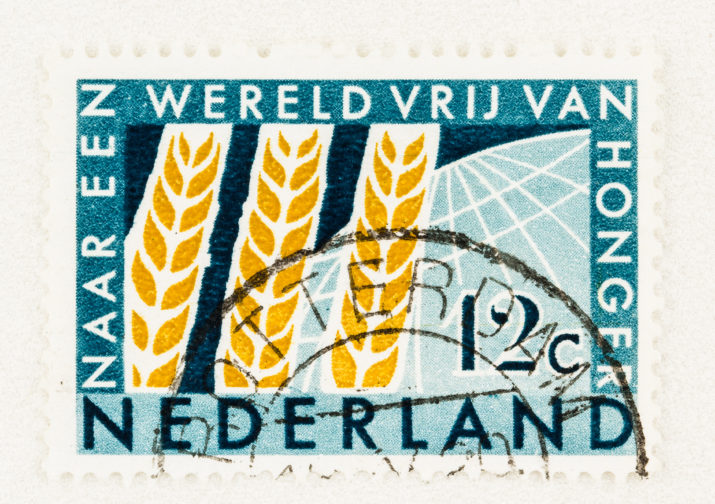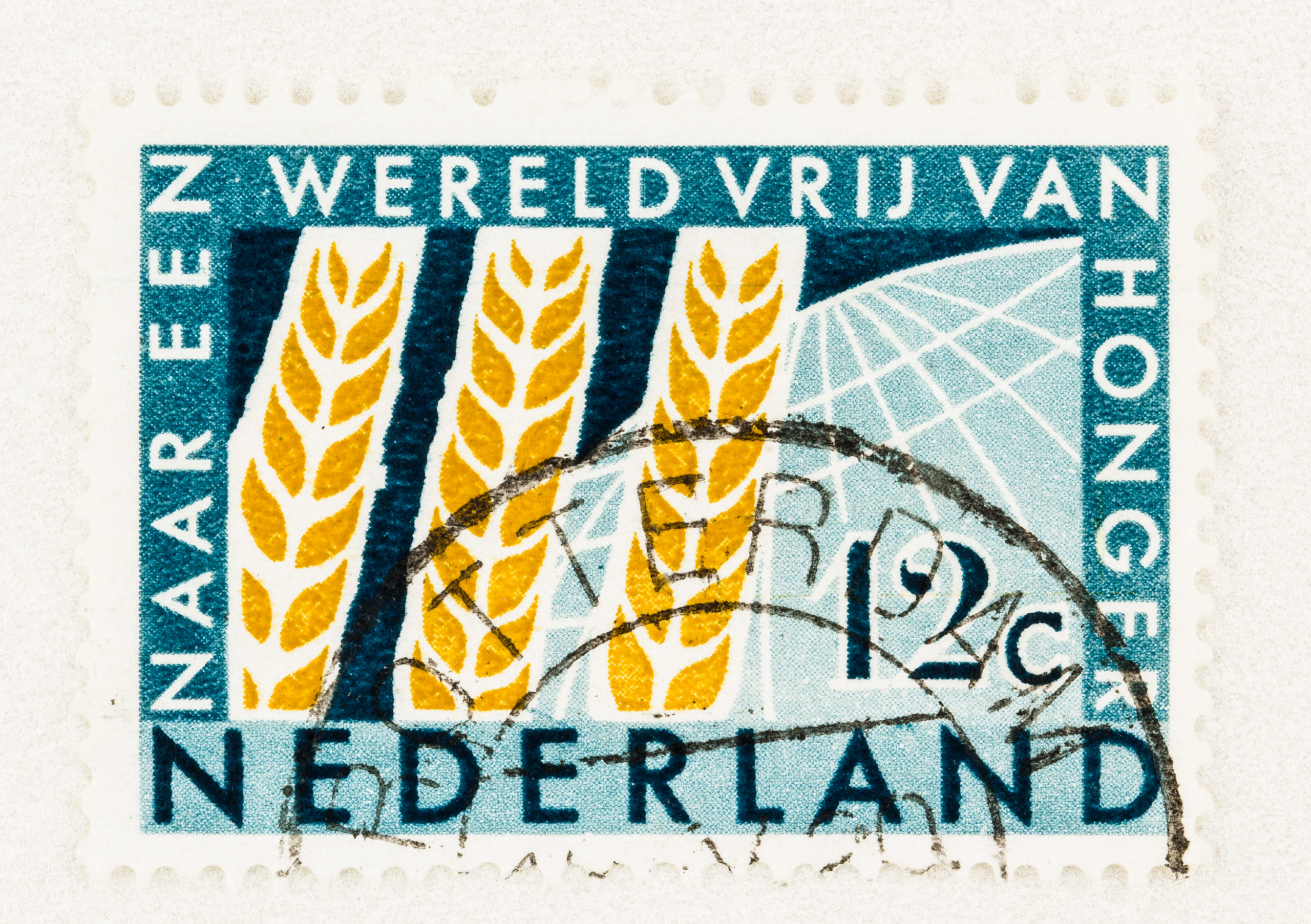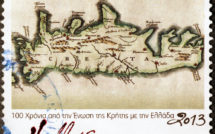

This is part of our special feature on Rurality in Europe, and a roundtable, Changing Agriculture in Rural Europe.
No one knows when the uncertainties of the COVID-19 era will ease into more predictable rhythms. In Europe, as everywhere else, the pandemic has complicated even mundane tasks like grocery shopping. Disruptions to food supply chains and shortages of staple goods, such as flour, have been especially jarring for residents of prosperous northwestern Europe and the United Kingdom.[1] At the same time, the crisis has intensified numerous efforts to strengthen European rural economies begun in the last twenty-odd years and transformed scholarly debates over the quest for food sovereignty into a topic of everyday conversation. In contrast to debates over food security that prioritize the adequate provision of food without reference to its origins, advocates of food sovereignty envision multiple, overlapping food systems tailored to individual communities’ agroecologies, sensitive to the capacities of small as well as large growers, and respectful of its members’ dietary needs and desires. The attention to food’s sensory pleasures is, of course, influenced by the Slow Food campaign begun in Italy in 1989, and by the Slow Food Biodiversity Foundation formed in 2003.[2] Thus, one of the pandemic’s silver linings is the advancement of two of the European food sovereignty movement’s major goals: to enlist all producers and consumers in the effort to democratize food systems and embed a given community’s diet in its surrounding agricultural landscape. The sheer number and diversity of projects designed to support the push for food sovereignty and their broad geographical scope make it hard to generalize, but all promote regenerative agricultural practices and seek to educate consumers about the nutritional benefits, unique flavors, and ecological limits of place-based food landscapes.
This essay first sketches the dense network of scientists, journalists, farmers, politicians, and consumers dedicated to making European agriculture more sustainable. Given bread’s enduring communal, spiritual, and political significance, and the 2020 trend of pandemic-baking, it seemed fitting to survey efforts to revive heritage wheat, nudge conventional farmers toward renewable growing methods, and promote artisanal baking as a window onto the creative energy emanating from the European countryside.[3] As a historian of rural Germany, I find these trends heartening and many of the examples I use reflect my familiarity with the German context. In that vein, I would add that the food sovereignty movement and the projects profiled here bear no traces of the rural nostalgia typical of twentieth-century searches for order in Europe. Instead, they embrace hybrid solutions to problems that combine the latest scientific research with traditional agroecological wisdom, enhanced by twenty-first century communication networks. As such, these initiatives seem poised to bridge the dichotomies of urban-rural, center-periphery, north-south, west-east, and modern-backward that have divided the continent for more than two centuries, and offer templates for building healthier, more sustainable, biodiverse, and equitable food systems.
Promoting agroecology in Europe
Across Europe, there are scores of organizations dedicated to educating the public about regenerative agriculture and helping growers shift from conventional to sustainable farming techniques.[4] Simply put, regenerative agriculture means farming systems that work with nature’s processes of self-renewal and where year-to-year yield consistency takes priority over extracting the maximum harvest in a given season. Recently, Manon Castagné and François Delvaux warned that it should not be reduced to atmospheric carbon capture, or carbon farming, as proposed by the EU’s Green Deal.[5] They and other proponents of agroecology argue that the narrow emphasis on carbon farming merely “greens” the industrial food system and avoids grappling with its fundamental restructuring. Beyond improving soil carbon, Castagné and Delvaux insist on the need for “agricultural and economic diversification, food-chain decentralization and de-concentration, vibrant territorial markets, healthy soils, a high level of autonomy for farmers, and more.”
Examples of pan-European organizations dedicated to Europe’s agroecological transformation include the European Union’s European Institute of Innovation and Technology, or EIT, Food;[6] Solutions for Improving Agroecosystem and Crop Efficiency, or SoIACE;[7] Access to Land;[8] the non-profit Agricultural and Rural Convention, or ARC, 2020;[9]CeReRE, or Cereal Renaissance in Rural Europe;[10] the European Association for Agroecology;[11] Fit for Food;[12]Diversifood,[13] and many others. The European Cooperative Programme for Plant Genetic Resources, founded in 1980, is dedicated to the conservation and exchange of plant genetic resources.[14] Europeans also are strongly represented in global organizations like the FAO, La Via Campesina, the international peasants’ movement[15] and Let’s Liberate Diversity![16] A plethora of national organizations underpin the pan-European network, not to mention the regional and local groups that organize public seminars, conduct scientific experiments, sponsor food and agricultural festivals, and engage in online forums to offer practical advice to amateur and professional growers.
The push to recover and nurture the links between specific places and plant and animal species, captured by the term landrace and the French terroir, is illustrated vividly by the names of nineteenth century wheat landraces being reintroduced in many European regions in the last decade or so. They are more genetically diverse, unlike standard hybrid wheat that is sterile.[17] In Bavaria, there is Ackermanns Bayernkönig, Alpiner Begrannter Land, and Berchtesgadener Vogel.[18] From the UK, there is Kent Old Hoary, Orange Devon, and Gymro (Welsh); Dutch varieties include Wilhelmina, Bovenlandse and Vriese; in France there is Rouge de Bordeaux, Saumur d’Automne, and Bon Fermier; and in Italy landraces called Senatore Campelli, Villa Glori, etc.[19] Grain husbandry has become a central pillar of European agroecology.
New “old” grains
As in the United States, worries about the loss of agrobiodiversity due to industrial agriculture and the homogenization of western palates have fueled efforts to study and promote lesser known ancient wheat cultivars such as einkorn, emmer, spelt, and khorasan, or kamut. The oldest of these is einkorn, which has never been hybridized and, when ground, produces a buttery yellow flour higher in protein and antioxidants than conventional wheat. In 2012, a Reuters story about Bulgarian farmers’ increased cultivation of einkorn to meet western European demand noted its superior nutrition and meager fertilizer requirements compared to conventional wheat, as well as consumers’ rising health consciousness. Despite these advantages, the reporter commented, “The low yield and the need for threshing make the einkorn unfit for modern agriculture, but its excellent nutritious qualities make it a specialty on the market.”[20]
Definitions of “modern agriculture”—or what modern agriculture ought to look like―have broadened since then, informed by worries about the ecological and human health risks of industrial agriculture, and more European scientists and growers have begun experimenting with einkorn cultivation. In Germany, agronomists at Cultivari, GmbH in Lower Saxony received a three-year grant in 2019 to assess the baking qualities of einkorn; the project, called Optimaleinkorn, seeks to persuade growers, processers, and consumers of the grain’s advantages in terms of taste, digestibility, and sustainability. Dottenfelder Hof, in Hessen, includes a working organic farm, a store, a seed breeding and research center, and an agricultural school. Similar endeavors that combine grain cultivation, milling, and research on the flours produced from heritage grains can be found across the continent, such as Gilchester’s Organics in Northumberland, UK; Agroecologica in Denmark; Naturgold Europe in Hungary; Bio en Hauts-de-France; Jovial Foods in Italy; the Healthy Minor Cereals project in the Czech Republic, and many more. The Swiss company Biofarm’s tongue-in-cheek advertisement for its einkorn flour captures the current enthusiasm, “A frontrunner, lean and mean” (Ein Spitzenreiter, schlank und rank).
Another ambitious experiment to produce wheat that is sustainably grown, nutritious, and tasty began in 2001-2002 at the Organic Research Centre in Berkshire and Wakelyns Agroforestry in Suffolk, the brainchild of Dr. Martin Wolfe. In 2012, they introduced the United Kingdom’s first population wheat, meaning wheat produced by breeding twenty different genetic varieties with different characteristics. Christened ORC Wakelyns YQ (yield & quality), the wheat proved more resistant to climate and weather fluctuations, required fewer inputs (fertilizers), produced reliable yields, and tasted good. In 2014, the scientists behind ORC Wakelyns YQ successfully lobbied the European Union to allow growers to market varietals that did not conform to the monovarietal regulations. This victory, and other efforts to develop seeds using the population approach, suggest that “modern agriculture” is no longer synonymous with industrial agriculture and signal a major change in attitude toward the value of biodiversity for the future of the European food supply. The composite cross population seeds pioneered by Dr. Wolfe at Wakelyns are now used by farmers as far east as Hungary. A testament to the flour’s appeal to bakers and consumers alike is the success of Kimberley Bell’s Small Food Sourdough Bakery in Nottingham, which has used it exclusively since 2018. This experience in turn inspired her to establish the UK Grain Lab, a consortium of bakers, millers, growers, and consumers.[21]
Certainly, these new agro-businesses are relatively small in scale and target educated and better-off consumers. But all reported unprecedented surges in demand beginning with the lockdowns in March 2020 that suggest the pandemic has focused more of the European public’s attention on food’s origins, fostered curiosity about and respect for local producers, and given consumers a new vocabulary to express their needs and desires. As Andrew Wilkinson, grower and miller at Gilchester’s Organics, noted recently:
From the cry [in March and April] “you have to supply us, we’re desperate” came the softer “We’re so grateful for our flour. Thank you for everything you’re doing.” The most profound impact that lockdown had on people was the realization that they could not do without two things: food and friendship. We were able to supply a bit of both.[22]
That said, the increased public attention to agrobiodiversity sparked by the pandemic ultimately must be supported by state funds for scientific research; in 2020, only the Swiss government boasted major support for agroecological research while investment everywhere else was negligible.[23]
Testing conventional (agricultural) wisdom
In contrast to the either/or thinking about what constitutes sustainable farming typical of earlier debates, many reformers now view the shift toward regenerative agriculture along a spectrum. One example is the loosening of EU regulations for seed saving that will take effect in 2021, which allows growers to gather their own seeds for the following year rather than being compelled to purchase them from a handful of large organic seed companies.[24] The strategy of enacting gradual changes to industrial agriculture and consumption patterns is exemplified by the Bavarian Initiative Wasserschutzbrot, or “water protection bread.” Water management engineers in Lower Franconia first developed the idea in 2014, building a coalition of Bavarian farmers, millers, and bakers and advised by scientists at the German branch of the Research Institute for Organic Agriculture in Frankfurt. The plan was to persuade area wheat farmers to forgo the third and final application of nitrogen fertilizer in order to hinder groundwater contamination, an ongoing environmental problem due to the region’s thinner soils. The trade-off was a flour that contained slightly less protein, 11-12 percent versus 13 percent, making the wheat less marketable for use in baking. In addition to skipping the third round of fertilization, farmers had to refrain from using the herbicide glyphosate after the harvest of the previous crop, and to erect signs in their fields explaining the “water protection wheat,” or Wasserschutz-Weizen, experiment. Participating mills had to be in the region, have the capacity to test the flour for nutrients, and provide appropriate storage. Finally, bakers had to certify that their Wasserschutzbrot contained at least 60 percent of the water protection wheat flour and agree to bake a certain number of the loaves daily, all year round.
In the last five years, the Wasserschutzbrot experiment has had notable success. Besides being one of the three finalists for the 2018 German Sustainability Prize (Deutscher Nachhaltigkeitspreis), the project has expanded to include participants from Upper and Middle Franconia, and since August 2020, Lower Bavaria. There are currently forty-one farmers, thirteen water engineers, seven mills, and thirty-six bakers involved in the effort and many others have expressed interest. The first bakers to take the plunge were concerned that the flour would be difficult to work with, but quickly found that their tactile experience working with dough made the transition more straightforward than anticipated. Some of the participants’ comments about the endeavor illustrate the gradual shift in thinking that has powered the idea’s popularity. Franz Strixner, the most recent farmer to adopt the new cultivation guidelines in spring 2020, remarked, “I grow water protection wheat to show that even conventional farmers are able to protect the groundwater and care for the environment.”[25] Baker Michael Oppel echoed similar sentiments about his reasons for joining: “I’m delighted to be a water protection baker because it’s a step in the right direction… and [it] combines sustainability, regionality, and environmental consciousness.”[26]
On a much larger scale, an EU-funded five-year initiative called SoIACE (Solutions for Improving Agroecosystem and Crop Efficiency) begun in 2017, is a consortium of twenty-five research, industry and agricultural extension partners from fourteen countries. Its mission is to develop new wheat and potato cultivars that are better able to withstand the vagaries of climate change (especially rainfall) and require fewer chemical fertilizers. In Hungary, agronomists connected with the project recently concluded that a three-year experiment to re-introduce einkorn and emmer wheat landraces would make sense for farmers interested in transitioning to organic cultivation methods on marginal land.[27]
From Soil to Slice: growing and baking communities
In addition to the professional scientists, growers, millers, and bakers profiled here, there are several European grassroots projects that aspire to food sovereignty and invite volunteers from all walks of life to learn more about growing wheat and baking through hands-on experiences. Soil to Slice, a program run by the non-profit, “Scotland: the Bread,” exemplifies the start small, think big approach to improving local and regional food systems. For example, in 2018, the Soil to Slice program hosted two “People’s Plant Breeding” events whose goal was to “test the hypothesis that we can democratize, preserve and perhaps even improve genetic diversity, as well as showing how ordinary people can contribute to public science.”[28] Andrew Whitley and the late Veronica Burke, the founders of Scotland: the Bread in 2015, stressed that their efforts to promote wheat growing in community gardens or urban plots certainly would not make professional growers redundant. However, they reminded us that “a plot of just 8 by 10 meters can produce enough wheat to make bread for one person for a full year. What is the next step for your local area?”[29] In response to the COVID-19 pandemic, the group first organized “Baking in the Community,” a coalition of professional and home bakers to supply bread to “people living in areas of multiple deprivation,”[30] a new network for professional bakers to exchange advice about adapting to the pandemic,[31]and the “Flour to the People” project that, among things, is a pay-it-forward plan that encourages community members to purchase “solidarity bags” of flour that get delivered to community bakeries.[32] Scotland: the Bread is also active at the start of the supply chain, working with local mills to process wheat grown in Scotland and conduct experiments at its Balcaskie Estate in Fife with heritage wheat and rye adapted to the Scottish climate.[33]
In recent years, some European bakers have started to think about bread baking as a tool of social and political engagement, and to use their bakeries as sites to build bridges between generations, social classes, and new immigrants and longtime residents. One in Vienna and two in London particularly illustrate how rural and urban Europe have become tightly intertwined in the twenty-first century, and how the pandemic has highlighted the potential of food, in this case bread, to bring people together. The Brockwell-Bake non-profit began in 2008 as a baking competition in South London and has expanded into education programs at local schools.[34] Students learn not only how to bake bread, but also have the chance to visit heritage wheat plots in the UK and abroad, grain mills, and attend workshops. Despite travel restrictions in 2020, participants visited two farms in Sussex, including Wakelyns. Another London-based non-profit, Breadwinners, partners with local bakeries to train newly-arrived refugees and asylum seekers in artisanal baking and the other skills necessary to run their own businesses.[35] Under the motto, “Fresh bread, fresh start,” asylum seekers, who are legally unable to work, gain valuable work experience and refugees are paid the UK Living Wage.[36] After the lockdown in March, Breadwinners moved to online delivery and currently operates ten outdoor markets throughout the city; one of their “graduates,” Hassan Abdullahi is now the operations coordinator. Like Breadwinners, the team at the wood-fired bakery Gragger & Chorherr in Vienna trains refugees in baking skills. Founded during the refugee crisis in 2015, their slogan “good bread, good chances, good place” encapsulates the bakery’s mission to create a space for enjoying delicious and nutritious bread, and for new social and economic opportunities in an increasingly diverse Europe.[37]
The COVID-19 pandemic’s exact toll to lives and livelihoods will not be known for decades and, as many journalists and scholars already have emphasized, the pandemic has exposed deep vulnerabilities and inequities in our food systems. As the end of 2020 approaches, these weaknesses are still apparent, but in the European case, the shocks have deepened ongoing discussions of how food is grown, processed, marketed, and enjoyed. The rural (and urban) trailblazers mentioned here—and there are many, many more—have given their communities templates for action that, in the context of the pandemic, have moved from the fringes to the center of public discussion. The aspirations of European food sovereignty advocates to shorten food chains, develop genetically diverse and sustainably grown food crops, and show how tightly bread and social justice are intertwined are ambitious, but the momentum entering 2021 is with the grain.
Elizabeth B. Jones is Emerita Professor of German and European history at Colorado State University. Her publications focus on the rural history of nineteenth and twentieth-century Germany, especially its gender, environmental, and political dimensions.
References:
[1] Despite Brexit, for the purposes of this essay the United Kingdom is included as part of Europe.
[2] https://www.fondazioneslowfood.com/en/
[3] https://www.euronews.com/2020/04/18/why-are-so-many-of-you-baking-bread-during-the-coronavirus-lockdown
[4] For an excellent overview, see Emile A. Frison and Nick Jacobs’ report for the International Panel of Experts Food, From Uniformity to Diversity: A Paradigm Shift for Industrial Agriculture to Diversified Agroecological Systems (iPES Food 2016)
[5] https://www.arc2020.eu/eu-green-deal-carbon-farming-not-compatible-with-agroecology/
[6] https://eit.europa.eu/our-communities/eit-food
[7] https://ec.europa.eu/eip/agriculture/en/find-connect/projects/solace-solutions-improving-agroecosystem-and-crop
[8] https://www.accesstoland.eu/index.php
[9] https://www.arc2020.eu/
[10] For an excellent overview of CeReRE’s work see http://cerere2020.eu/ https://www.youtube.com/watch?v=FE23SDj19uU
[11] https://www.agroecology-europe.org/
[12] https://fit4food2030.eu/
[13] http://www.diversifood.eu/
[14] https://www.ecpgr.cgiar.org/
[15] https://www.eurovia.org/
[16] https://liberatediversity.org/
[17] A short film showing the differences between modern wheat cultivars and Nordic landraceshttps://www.youtube.com/watch?v=a1HXNe_dpGM
[18] Klaus Fleißner, Erhaltung Bayrischer, landwirtschaftlicher, pflanzengenetischer Ressourcen (=alte Sorten) an der Bayrischen Landesanstalt für Landwirtschaft (Bayrischer Landesanstalt für Landwirtschaft, 2020). See also the European wheat database maintained by Ludmila Papoušková, http://genbank.vurv.cz/ewdb/ and B. Belderok et al., Bread-Making Quality of Wheat: A Century of Breeding in Europe (Springer, 2000).
[19] Josep Pujol-Andreu, “Wheat Varieties and Technological Change in Europe, 19th and 20th Centuries: New Issues in Economic History, Historia Agraria 54 (2011): 71-103.
[20] Tsvetelia Tsolova, https://www.reuters.com/article/us-bulgaria-wheat-einkorn/bulgarians-cultivating-ancient-einkorn-grain-idUSBRE87D0F420120814
[21] https://www.ukgrainlab.com/
[22] Andrew Wilkinson e-mail to author, September 28, 2020.
[23] See Francois Delvaux, https://www.arc2020.eu/the-missing-funds-for-agroecology-whats-europes-role/
[24] https://www.grain.org/es/entries/141-whose-harvest-the-politics-of-organic-seed-certification
[25] https://wasserschutzbrot.de/partner-niederbayern/franz-strixner/
[26] https://wasserschutzbrot.de/partner-unterfranken/naturbaeckerei-oppel/
[27] Szilivia Bencze et al. “Re-Introduction of Ancient Wheat Cultivars into Organic Agriculture—Emmer and Einkorn Cultivation Experiences under Marginal Conditions,” Sustainability 2020, 12, 1-15.
[28] https://scotlandthebread.org/2018/09/27/peoples-plant-breeding-event-part-2-the-grain-selection/
[29] https://scotlandthebread.org/get-involved/soil-to-slice/
[30] https://scotlandthebread.org/2020/05/15/baking-in-the-covid-community-part-one-baking-for-neighbours/
[31] https://scotlandthebread.org/2020/06/05/baking-in-the-covid-community-part-three-responding-to-demand-for-local-bread/
[32] https://scotlandthebread.org/2020/07/31/flour-to-the-people-a-community-bread-project/
[33] https://scotlandthebread.org/2020/03/29/national-flour-for-a-national-emergency-mungoswells-to-the-rescue/
[34] http://brockwell-bake.org.uk/#news
[35] https://www.breadwinners.org.uk/
[36] https://www.socialenterprise.org.uk/blogs/how-one-social-enterprise-is-using-artisan-bread-to-create-jobs-for-refugees/
[37] https://www.gragger-chorherr.at/wofuer-wir-stehen
Photo: Photo: SEATTLE WASHINGTON – May 1, 2020: 1963 Stamp of Netherlands featuring wheat ( corn) with globe in background, promoting food security,. Scott # 413 | Shutterstock
Published on October 10, 2020.




